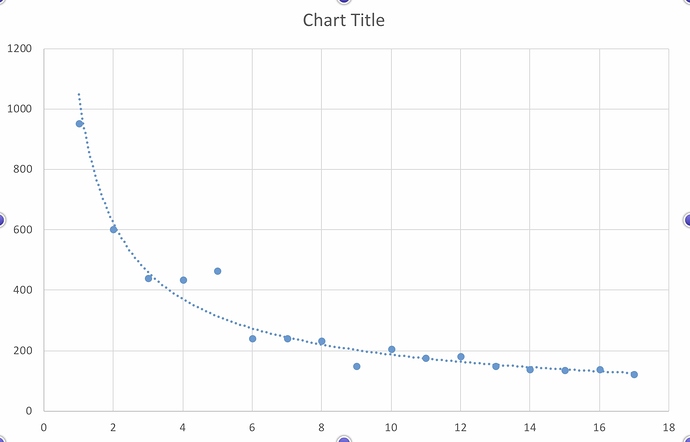Okay, if you’re willing to explore any and every other possibility … Gen. 1-11 is a polemic against Mesopotamian political, theological, and economic ideology. Since Gen. 1-11 is a direct rebuke to Mesopotamian culture and religion, it adopts the same mytho-historical genre that every scribe across the ANE learned in scribal school. Why do you think there are so many echoes of Mesopotamian mythology in Genesis 1-11? Because the “final exam” for potential scribes was to copy the flood tablet of Gilgamesh, or Atra-hasis, or the Sumerian King List, or Enmerkar and the Lord of Arratta, etc.
Mesopotamian mythology served kings and priests as politico-religious propaganda. This apparently began with Shulgi of Ur (2094-2047 BC). Over the course of 20 years, he transformed himself into Gilgamesh’s brother and declared himself a god. As Michalowski details in “The Mortal Kings of Ur”:
“Shulgi’s transformation and reinvention was a carefully managed affair. … In literature this found expression in the concomitant all-encompassing reinvention of the written tradition… The centralized, patrimonial state run from Ur required a well-regulated and well-trained bureaucracy … Writing was the instrument by which the Crown exercised oversight and control. … The hearts and minds of these literate servants had to be molded through schooling that not only taught them writing skills but also indoctrinated them into the ideological aspirations of the new state.
Some of this also found expression in a composition that we call the Sumerian King List , a largely fictional genealogical enumeration of cities – and dynasties – that ruled Mesopotamia since time immemorial, when “kingship descended from the heavens.” Now that Piotr Steinkeller (2003) has published an Ur III exemplar of the text, we can be fairly certain that it was composed under that dynasty, most probably during Shulgi’s reign. The oldest manuscript that we have ends with the reign of Ur-Namma, and then the scribe added a subscript: “May my king, divine Shulgi, live a life of never-ending days!” (Emphasis mine.)
After the fall of Shulgi’s dynasty, the rulers of Isin (Old Babylon) rewrote history to connect their newly founded dynasty to antiquity. They added the names of kings who ruled “before the flood” to give the appearance that Babylonian kings could trace their lineage to the beginning of kingship, when it “descended from the gods.” In Faith, Tradition, and History: Old Testament Historiography in Its Near Eastern Context , the authors say:
… in its final form, the SKL is an apology for the post-Ur III Isin dynasty. The rulers of the Isin dynasty saw themselves as continuing the tradition of kingship at Ur. … Neither the antediluvian nor the post-Ur III Isin rulers were included in the original composition. Instead, the pattern of several successions of the kingship of Sumer from Kish to Uruk to Ur dominates the list.… (A) civilization renders account of its own past in intellectual form…. In the case of the Sumerians, their tendency to do speculative thought in terms of “myth” results in the fact that it was not characteristic of them to separate myth from history. This is reflected in their historiography.
The antediluvian kings added to the King List by Babylonian scribes reigned outrageously long times of 30-40,000 years. The first 18 or so kings after the flood reigned around 900 years. Following Gilgamesh, the length of reign drops off to something reasonable, such as 36 years. This is the same pattern we see in the Genesis genealogies.
Summing up, scribes all over the ANE, including Israel, were familiar with Mesopotamian mythology because they learned it in school. Mesopotamian mythology served the needs of its political masters. Their myths said that the king was the representative of the gods (if not a living god, a la Shulgi). The king was credited with building cities, maintaining agriculture (irrigation canals), and advancing culture.
Genesis 1-11 rejects all of that. Ordinary men and women are the image of God, not just the king. Ordinary people, not kings, built cities, domesticated livestock, and invented musical instruments, metallurgy, and religion (4:17-25). Furthermore, “the flood” did not happen because humanity was making too much noise for the gods to rest; God brought the flood because the earth was full of blood and violence.
And what about Babel? Sumerian followed by Akkadian cuneiform was the international language of diplomacy and trade. It was the symbol of Mesopotamian cultural supremacy and hegemony. The invention of alphabetic writing challenged that. Suddenly, local peoples were writing their own stories in their own language. West Semitic vernacular alphabets proved crucial in local people’s formation of identity and common purpose. Hebrew writing allowed the creation of a revolutionary literature divorced from royal privilege and prerogative. The end of the Mesopotamian empires was the end of cuneiform’s one-language dominance, a situation that had prevailed since the days of Sargon and Shulgi. That is the “historical” reality behind the Tower of Babel.
In short, biblical “history” begins with Abram, whom God called out of idolatry (Josh. 24:2). Genesis 1-11 is a polemic response to Mesopotamian mythology/ideology. It is written in the genre to make the point even more clear. Every literate person (scribe) in the ANE would immediately recognize the Genesis parody of the Sumerian King List, Gilgamesh, Atra-hasis, etc. The fact that this background was forgotten as cuneiform fell into disuse isn’t surprising.
Well, if anyone made it this far, congratulations!

![]()
